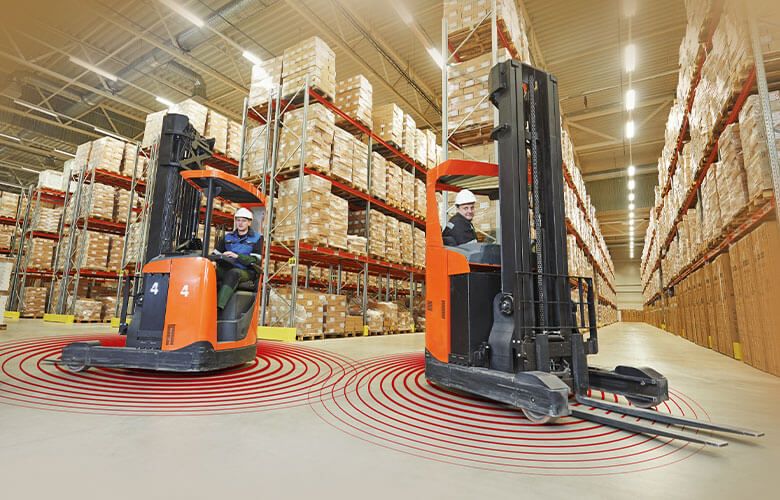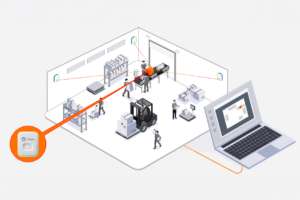Contents
Companies with large facilities need a way to monitor their staff and the work being completed by them at all times. A modern long range active radio frequency identification system (RFID) is the best way to make this happen. Litum IoT experts can help design and deliver such a system that suits your needs with sub-meter accuracy, no matter how big space.
How Does Long Range Active RFID Tracking System Work?
Everything starts with a mesh network of active RFID readers (anchors) set up throughout your facility. These readers are strategically placed to provide complete coverage of the area. Each active RFID reader will always be scanning for the signal sent out by an RFID tag worn by staff or affixed to your equipment and vehicles.
These tags are made up of a small antenna, sensors, RFID chip, and battery. The battery provides power allowing the RFID chip to transmit a radio signal actively. Some of the internal power sources on RFID tags can last for years before being replaced. RFID tags may transmit once every few seconds or minutes, depending on how often you want to receive movement data. The RFID readers may also have an internal battery that provides backup power for several hours in case of an outage.
These signals sent out by the tags are picked up by the long range RFID readers placed around your facility. All data within the signal is converted into location data and sent back to RTLS software installed on a facility server. With this software, you can monitor the movement of everyone and all assets via the RFID tracker network. Litum’s RTLS software also allows you to create:
- Usage and activity reports
- Spaghetti diagrams
- Analytics
Using Ultra-Wideband (UWB) Signals
Litum relies on the UWB frequency range for transmitting signals with RFID tags. This frequency range allows for high-bandwidth communications over a large portion of the radio frequency spectrum. Yet, it boasts low energy requirements for transmission. There is also less risk of interfering with other kinds of radio transmissions and cell phones, which many people carry and use these days.
UWB for an active RFID tag comes with many potential advantages:
- Allows for quick transmission of large amounts of data.
- Data is spread over a wide channel range reducing potential losses.
- A resistance to jamming and signal interference.
- Dependable operation in hostile environments and busy areas.
Litum also offers some RFID tags with an optional Global Positioning System (GPS) module that allows you to rely on satellite-based location identification where coverage is available. This is an excellent supplemental tracking system for outdoor operations and vehicles that travel long distances.
Long range active RFID tracking allows mines, airports, and large warehouses to improve productivity and safety. It can cut costs by preventing accidents, minimizing losses, and reducing redundancy.
If you are considering a long range active RFID system in your facility or operation, contact Litum experts today to arrange a consultation.




